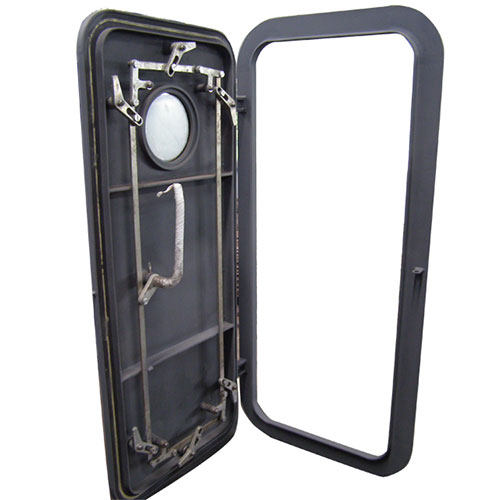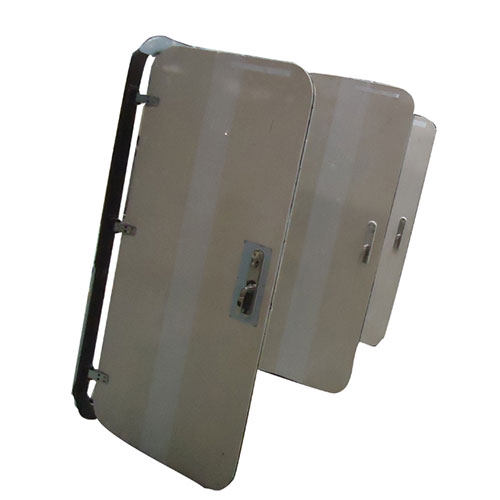How to Reduce Noise in Marine Doors
The safety, functionality and safety of a vessel are reliant on marine doors. However, they can be a source of annoyances caused by vibration, impact, leakage, and wear. A decrease in board comfort, reduction in communication and poor crew performance on long voyages can be caused by excessive noise. Entering and operating a vessel with quieter marine doors can improve living and working conditions at sea for the crew and their families.
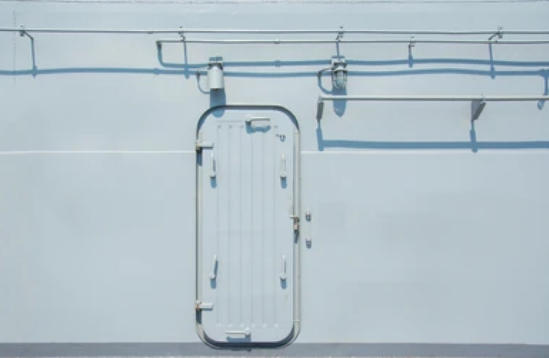
Table of Contents
Why Need Reducing Noise for Marine Doors
The need to reduce noise in marine doors goes beyond comfort and includes severe safety, health, and functionability issues.
1. Enhancing Crew Comfort and Well-Being
Rattling hinges, vibrating panels, and poorly sealed gaps, are all causes of noise that can break the period of rest for all crew members and, in time, lead them to exhaustion. On long voyages, exposure to noise can be damaging without rest. Reducing marine doors helps in creating a more peaceful atmosphere for the crew which will rest much more willingly, giving them the much needed recharge to increase performance.
2. Improving Safety and Communication
Communication on board the the vessel is crucial and can save lives especially when things gets chaotic. Communication can be hampered when there is too much noise especially when noise marine doors are opening and closing. Alleviating noise is one way to make the vessel more communication friendly and save time while efficient communication is accomplished.
3. Meeting Maritime Noise Regulations
There are noise regulations set in place, and in order to follow those International Maritime Organization (IMO) guidelines, the ship must protect its seafarers. The noise marine doors create are contributive in crossing the set boundary, and are, therefore, unnecessary. Coming down to the marine doors is the first step to follow these regulations and crossing the boundary, and is, therefore, a necessary step.
4. Protecting Equipment and Structural Integrity
There is a noticeable correlation between the amount of noise being produced which causes stress to the ship. In the long run, propelling a ship makes the hinges, seals, and even the locking mechanisms rust. Rang keepsers and locking sheath make the doors rattle and and make noise, which steps above the threshold of tension quietness, and the noise, because of the marine doors.
5. Enhancing Passenger Experience
For cruise ships, ferries, and other passenger vessels, customer satisfaction hinges on the levels of noise. Noise distraction or discomfort during the cruise is something passengers tend to complain about, and the doors of marine vessels that whiz and clang often don’t add to their comfort. Noise reduction enhances the environment and improves the vessel image.
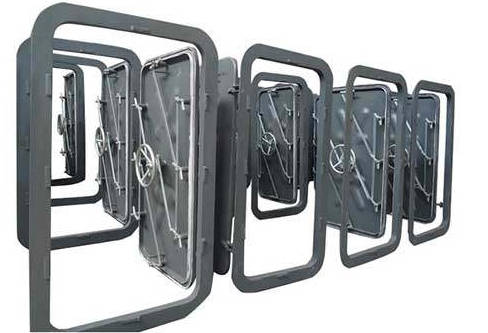
Common Sources of Noise in Marine Doors
| Source of Noise | Cause | Impact |
| Metal-to-Metal Contact | Hinges, locks, or latches rubbing or clattering | Produces squeaks, bangs, and rattles, reducing onboard comfort |
| Air and Water Leakage | Worn or damaged seals and gaskets allowing airflow or water movement | Creates whistling or rushing sounds, especially at higher vessel speeds |
| Vibration and Resonance | Engine vibrations or wave impact transmitted through door structures | Leads to continuous humming or rattling noises in cabins and corridors |
| Wear and Misalignment | Hinges, frames, or locking systems becoming loose or misaligned over time | Causes irregular squeaks, grinding, or rattling noises during door use |
| Improper Handling | Doors slammed or left unsecured in rough conditions | Generates loud impact noises and accelerates wear on components |
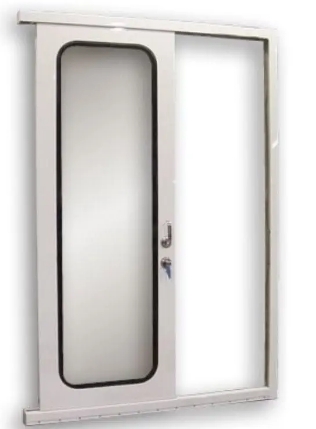
Key Strategies for Reducing Noise in Marine Doors
1. Strengthening Seal Integrity
One of the best techniques to reduce noise in marine doors is correct sealing. Rubber gaskets of appropriate quality and acoustic seals do not only prevent air leakage but also block external noise and vibrations. Seals that are worn out should be inspected and replaced in order to preserve the sound insulation and watertight sealing properties.
2. Proper Lubrication and Alignment
Squeaks and grinding noises are often confused within hinges and at serveral locations where metal is in contact with other metal. Utilizing marine-grade lubricants helps to reduce friction at the hinges. Routine checks of the hinges help to ascertain that they are still mechanically harmonized. Component realignment and harmonized mechanical laps helps to stabilize moving components during vessel vibration, which is often displaced during open water transit.
3. Vibration Control Measures
Doors and other components of a vessel do receive energy from the engine and from the waves which they are cutting. Vibration pads and other insulation materials that are placed between the door and the door jamb can reduce vibration noise faint from door resonance. Doors reinforced with sound absorbing composites can provide minimally interrupted operation in other high vibration areas.
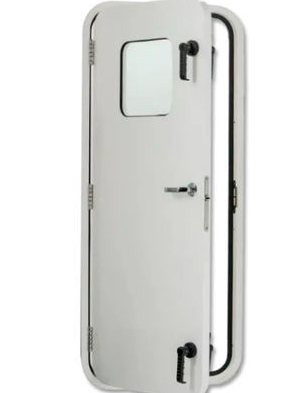
4. Adopting Soft-Close and Advanced Mechanisms
A door slam is a clear definition of high throughput noise which also adds to the wear of the hinges and seals positioned at the door. Vessels that incorporate marine doors fitted with cylinder and spring assisted soft-close devices can position optimally while being closed. Installation of modern advanced systems provide closed stealth operation while also extending the usability of the door.
5. Material Selection and Design Upgrades
Noise reduction can also be achieved at the design stage.
Here’s a clear chart for common materials for reducing noise in marine doors
| Material | Function in Noise Reduction | Typical Application in Marine Doors |
| Rubber Gaskets & Seals | Block air and water leakage while absorbing vibrations | Installed around door frames for airtight and soundproof sealing |
| Acoustic Foam & Panels | Absorb airborne noise and reduce echo | Added to door cores or internal linings in cabins and control rooms |
| Composite Materials | Provide structural strength with built-in sound insulation | Used in modern lightweight, noise-reducing marine door designs |
| Insulated Metal Layers | Dampen vibrations and reduce resonance | Applied in layered steel or aluminum doors with soundproof cores |
| Vibration-Dampening Pads | Minimize transfer of mechanical vibration from door to frame | Placed between hinges, frames, or mounting points |
| Laminated Glass | Block sound transmission while maintaining visibility | Used in noise-sensitive areas such as bridge doors and passenger spaces |
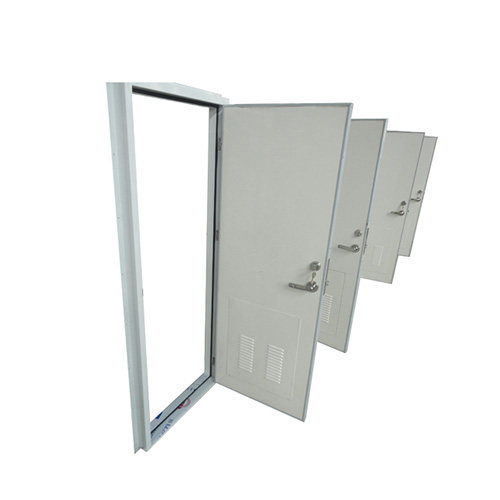
6. Crew Awareness and Training
Masterfully built doors can create noise if used poorly or without care. Training crew members not to bang doors, leave doors propped opened, not latched, not secured, not put on, and neither slammed, and also not to report screeches or sirens, supports maintenance and design. Door’s silencing technology won’t operate properly if humans don’t operate the doors properly.
Specialized Marine Door Types for High-noise Areas
| Marine Door Type | Noise-Reducing Feature | Typical Application |
| Soundproof Marine Doors | Built with insulated cores, acoustic panels, and reinforced seals | Cabins, control rooms, passenger areas |
| Composite Marine Doors | Lightweight with layered materials that dampen vibrations | Offshore platforms, high-vibration working spaces |
| Double-Leaf Acoustic Doors | Dual panels with gasketed seals to block higher sound levels | Engine rooms, generator rooms, machinery spaces |
| Fire-proof and Sound-rated Doors | Fire-resistance doors integrated with acoustic insulation | Corridors near engine compartments and galley areas |
| Watertight Acoustic Doors | Sealed against water ingress while reducing airborne noise | Bulkhead openings near machinery or rough sea exposure |
| Sliding Acoustic Marine Doors | Designed with soundproof panels and soft-close tracks to reduce noise | Passenger ship corridors, dining halls, and meeting rooms |

Periodic Inspections and Upgrades for Reducing Noise in Marine Doors
Inspections, upgrades, and reporting of shortcomings in quiet functioning of doors are favoured measures in efficient and long lasting marine door functioning. They improve the comfort and safety on the vessel.
Regular Inspections
Continuous inspections are fundamental for exposing doors and machines that have the potential for causing problems, especially with noise. Doors that are exposed to constant vibration, moisture, and excessive use can have problems with hinges, locks, and seals. If not attended to on time, the condition of those problems can become severe to the point of excessive rattling, squeaking, or whistling sounds. Silent and trouble free door control can be achieved by addressing the problems in maintenance plans.
Identifying Key Noise Sources During Inspections
With the passage of time, during inspections, the maintenance staff pay attention to the zones that are most prone to generating noise. The screws on hinges, latches, and locking devices are inspected to establish signs of wear, alignment, and proper lubrication. The door frames and panels are examined in detail to determine whether any loosening as a result of vibration has occurred, while seals and gaskets are inspected to determine whether they are compressed or damaged, letting air or water through. This set of measures guarantees that mechanical and structural sources of noise are covered.
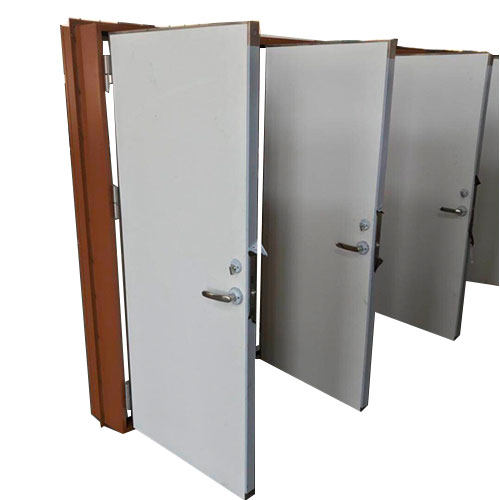
Maintenance Practices for Noise Reduction
Preventive maintenance activities that emerge during inspections are usually targeted to eliminate noise. All hinges and locks are greased, loose parts are tightened, and seals that are broken are replaced in such a way that noise is eliminated. Mats for vibration as well as pads for sound insulation can be fitted during maintenance to limit the noise passing through. These activities will reduce the noise but will prolong the life of marine doors, in case the maintenance is needed to eliminate the expensive repairs or replacements in the future.
Upgrading Doors for Long-Term Noise Control
Like any other maintenance, addressing noise in old or heavily used doors require upgrades. Accuracy in operations suite doors, door panels or lazy closers, or doors lagging behind in decades old sandwich construction can all benefit from improved acoustics. In some setups, walls acoustics doors for engine or high noise rooms along with cabins can noticeably increase comfort and efficiency.
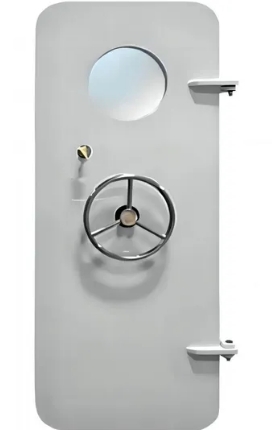
Summary
Aboard vessels, discomfort and worries for safety caused by noise are handled by reducing nose in marine doors. Along with sealing, vibration control, and careful handling, preventive maintenance done by ship owners ensures reliable and quieter marine doors. The conditions of living are enhanced through investment of vessel noise and efficiency as well as compliance with maritime regulations.


